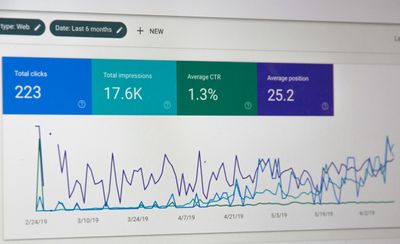A well-structured marketing strategy does more than you might think for a growing business. It helps you connect with your target audience, set achievable goals, choose the right channels, craft compelling messages, manage your budget and measure your progress.
In this guide to growth marketing, we’ll outline the key components that make up a small business marketing strategy, including the resources and budget you will need.
What’s the secret for marketing that moves the needle?
Marketing isn’t magic. Although, like most things that blend science and art, it can seem that way when done well.
Effective small business marketing strategies come from a combination of understanding your audience and making data-driven decisions.
In other words:
Insight + experience + data = small business marketing.
If you followed our previous guides to writing a mission and vision statement and defining your target audience, you already have a lot of the information you need to build a marketing strategy.
###Step 1: Define your target audience
Understanding your target audience helps with everything from generating business name ideas that resonate, to developing products and services, to setting growth goals.
You probably did some decent market research before registering your business. It’s alright if that was informal. Now is your opportunity to formalise what you know by:
- Gathering reliable data
- Defining (and documenting) your target audience
- Creating audience personas
Now is also a good time to check your business name still fits. If not, registering a new business name is a small investment in building your brand.
###Step 2: Set SMART goals
Marketing strategies are a roadmap to success. They sit within a broader business plan, essentially translating long-term goals into customer-facing communications. That means marketing goals are the direct descendants of business goals. And they need to be SMART.
- Specific: Translate lofty objectives into clear and precise targets.
- Measurable: Put a number on success so you can monitor your progress.
- Achievable: Stretch yourself, but don’t set targets beyond the reach of your resources, time and capabilities.
- Relevant: Marketing goals should align with your values and objectives.
- Time-bound: Motivate yourself with ambitious (but realistic) deadlines.
For example, instead of saying, “I want to increase brand awareness,” you could say, “I want to increase website traffic by 20% in the next three months.” This is known as a key performance indicator or KPI, a target you can break into smaller (daily or weekly) progress markers.
SMART goals give you an action plan. You know what you’re trying to achieve by when. Now you can make decisions that move progress along.
Step 3: Concocting the marketing mix
With a seemingly endless choice of marketing channels, it’s easy to spread yourself too thin. Another advantage of SMART goals is they help you prioritise. A good way to break down the marketing landscape is through paid, earned, owned and shared channels.
| Paid | Earned | Owned | Shared |
| Great for reaching a large audience immediately but requires a budget. | Free publicity, although you’re not in charge of the message. | You have complete control, but you’ll need to attract the right crowd. | Combining earned and owned channels to extend your reach. |
| Pay-per-click (PPC) like Google Ads; Display Ads; Social media ads; Paid influencer content; Out-of-home advertising; TV and radio ads; Newspaper and magazine ads. | Media coverage; PR placements; Word-of-mouth recommendations; Online review sites; Magazine articles; Trade publications; Influencer plugs. | Website; Blog; SEO; Organic social media; Email outreach; Shopfront; Physical mailing lists or flyers; Downloadable content. | Google Business reviews; User-generated content; Email forwards; Followers sharing your social content. |
You don’t need to be everywhere at once. Your marketing mix is the blend of different channels that will be most effective in reaching your audience with the time and resources available.
Getting the mix right requires audience insight, market research and experimentation over time.
Step 4: Crafting your message
In our earlier guide to defining a target market, we discussed how a Unique Selling Proposition (USP) clarifies why customers should choose your business over the competition.
Does your marketing always need to clearly communicate your USP? Not exactly.
Just like a strong business name, effective marketing should always arise from a USP and incorporate a compelling message. How you do it depends on the platform, goal and audience. For example, PPC ads should probably focus on your USP to get the message across quickly. On the other hand, website blogs and email campaigns can tone down the approach, weaving in USP more subtly.
Budgeting for small business marketing
Marketing is an investment. How much you invest depends on your resources, goals, competition and capabilities.
Although some paid channels have minimum spending thresholds, there’s no ceiling. There are also “free” marketing activities like social media and SEO – but are these right for your audience?
There is no hard and fast rule for setting small business marketing budgets.
Build your marketing budget based on audience insights and expected return on investment (ROI). Decide which goals are most important and work backwards to allocate your budget where it’ll make the most impact.
Measuring, adjusting and optimising
Track your marketing campaigns closely so you can see what is and isn’t working. You can use a variety of tools to track results, such as:
- Google Analytics
- Social media analytics
- Paid media reports
- Foot traffic counters
- Email engagement reports
Adjust your marketing strategy and budget based on trends and opportunities. Remember that the highest priority isn’t necessarily what delivers immediate ROI but the strategies that get you closer to achieving long-term goals.
Your partner in small business marketing
Registry helps you turn a great idea into a thriving business. With user-friendly business name registration and renewal tools, web hosting, custom emails and ABN support, we are a one-stop shop for small business growth.



